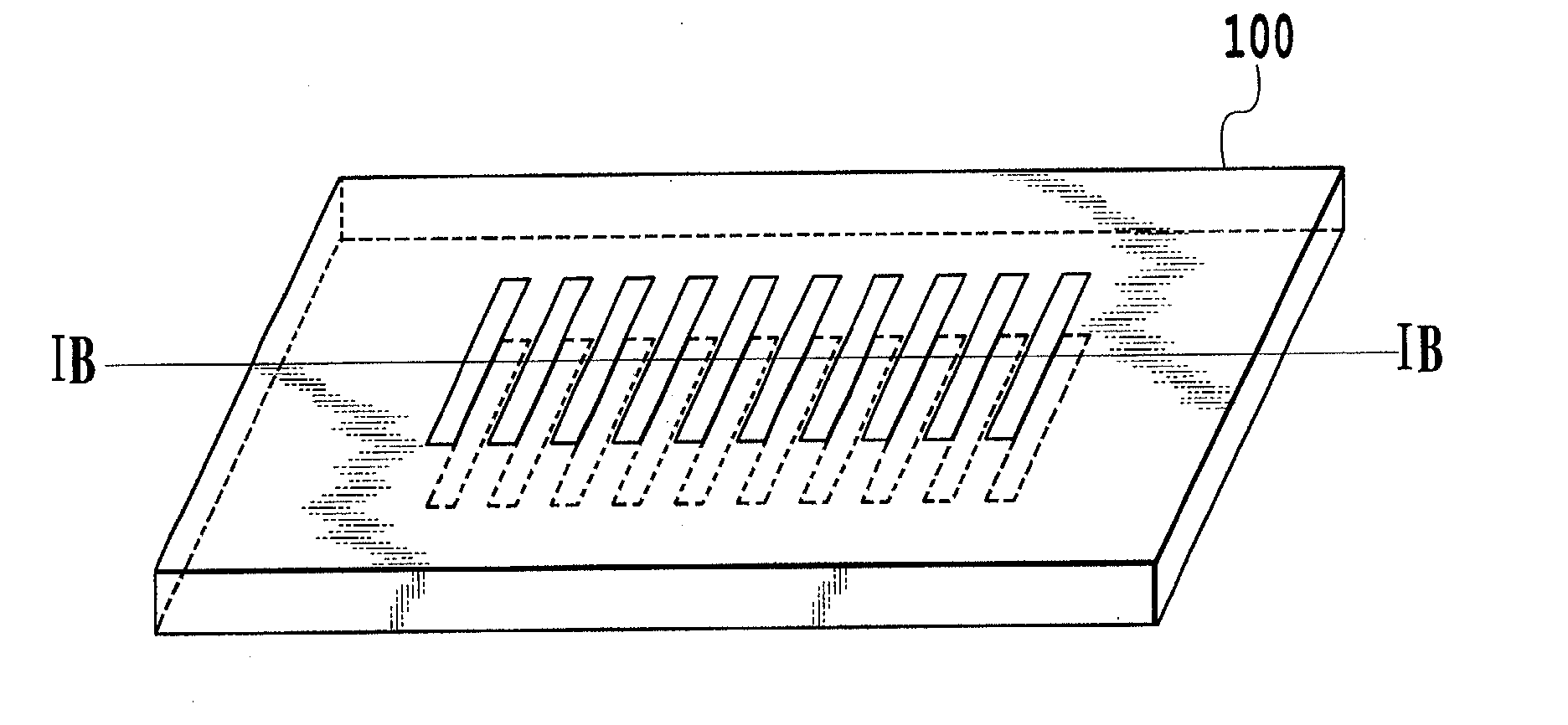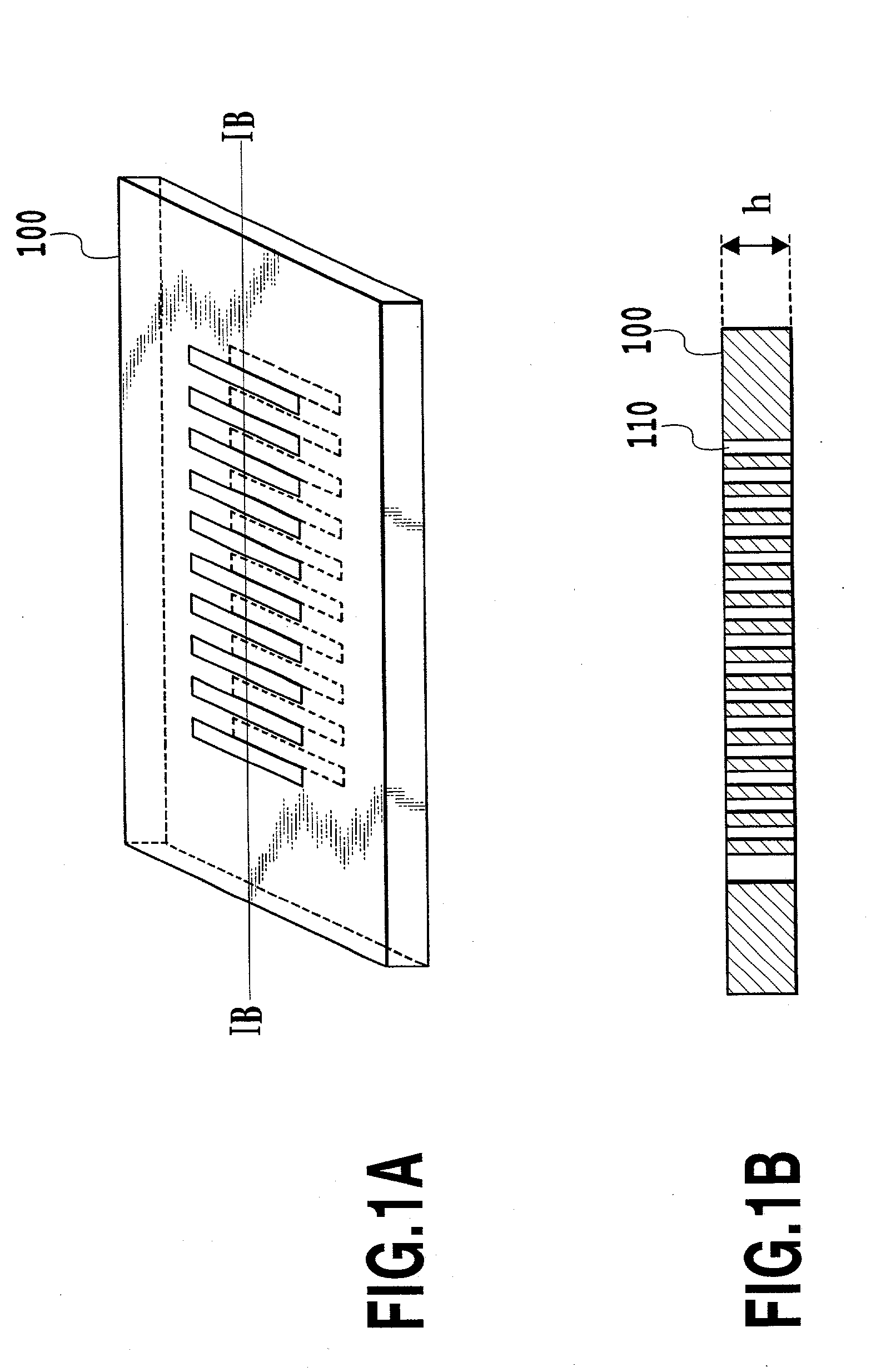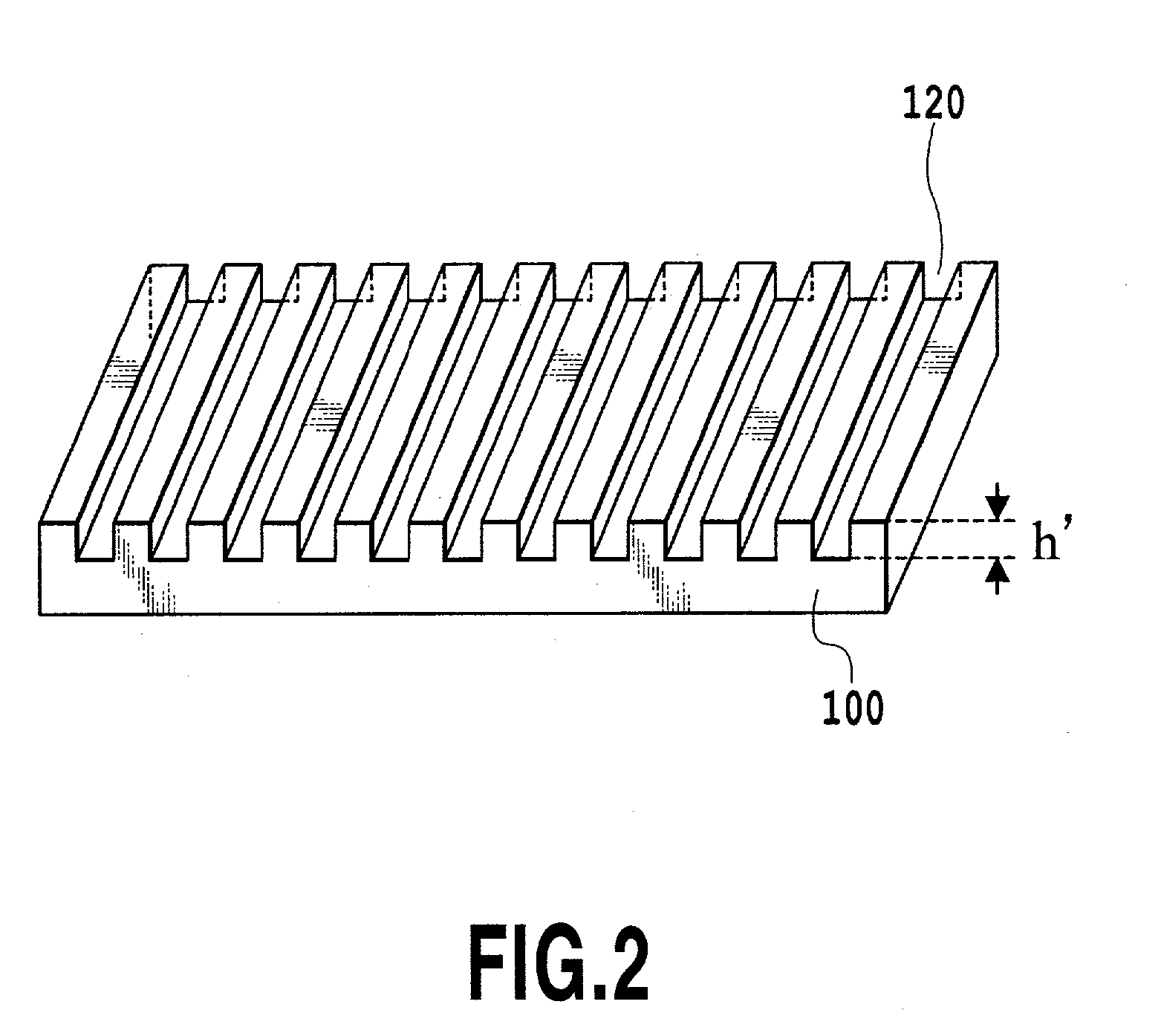Optical waveguide grating and method and mask for forming same
a technology of optical waveguides and fiber bragging, which is applied in the direction of optical waveguide light guides, instruments, optical light guides, etc., can solve the problems of complex formation process, only applicable methods, and difficult to achieve the above-mentioned method to produce a high-efficiency fiber bragging
- Summary
- Abstract
- Description
- Claims
- Application Information
AI Technical Summary
Problems solved by technology
Method used
Image
Examples
Embodiment Construction
]
[0145] The above-mentioned ion implantation conditions concerned with the present invention are applied not only for the fiber Bragg grating but also for the long period grating, and the above-mentioned embodiments of the present invention are also applied for the long period grating.
[0146] The present invention has been described in detail with respect to preferred embodiments, and it will now be apparent from the foregoing to those skilled in the art that changes and modifications may be made without departing from the invention in its broader aspect, and it is the intention, therefore, in the appended claims to cover all such changes and modifications as fall within the true spirit of the invention.
PUM
 Login to View More
Login to View More Abstract
Description
Claims
Application Information
 Login to View More
Login to View More - R&D
- Intellectual Property
- Life Sciences
- Materials
- Tech Scout
- Unparalleled Data Quality
- Higher Quality Content
- 60% Fewer Hallucinations
Browse by: Latest US Patents, China's latest patents, Technical Efficacy Thesaurus, Application Domain, Technology Topic, Popular Technical Reports.
© 2025 PatSnap. All rights reserved.Legal|Privacy policy|Modern Slavery Act Transparency Statement|Sitemap|About US| Contact US: help@patsnap.com



